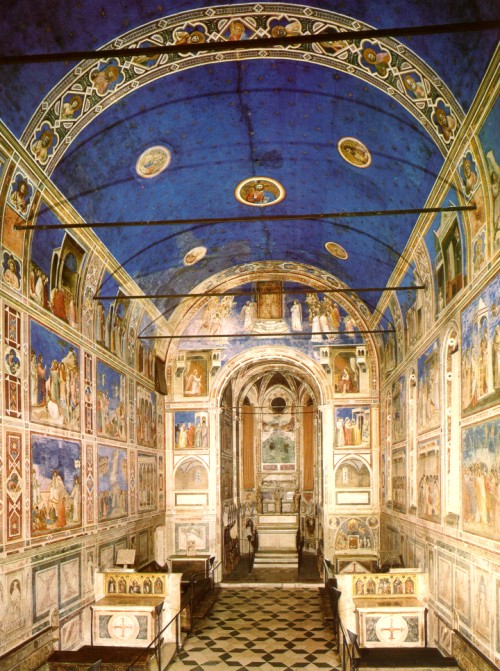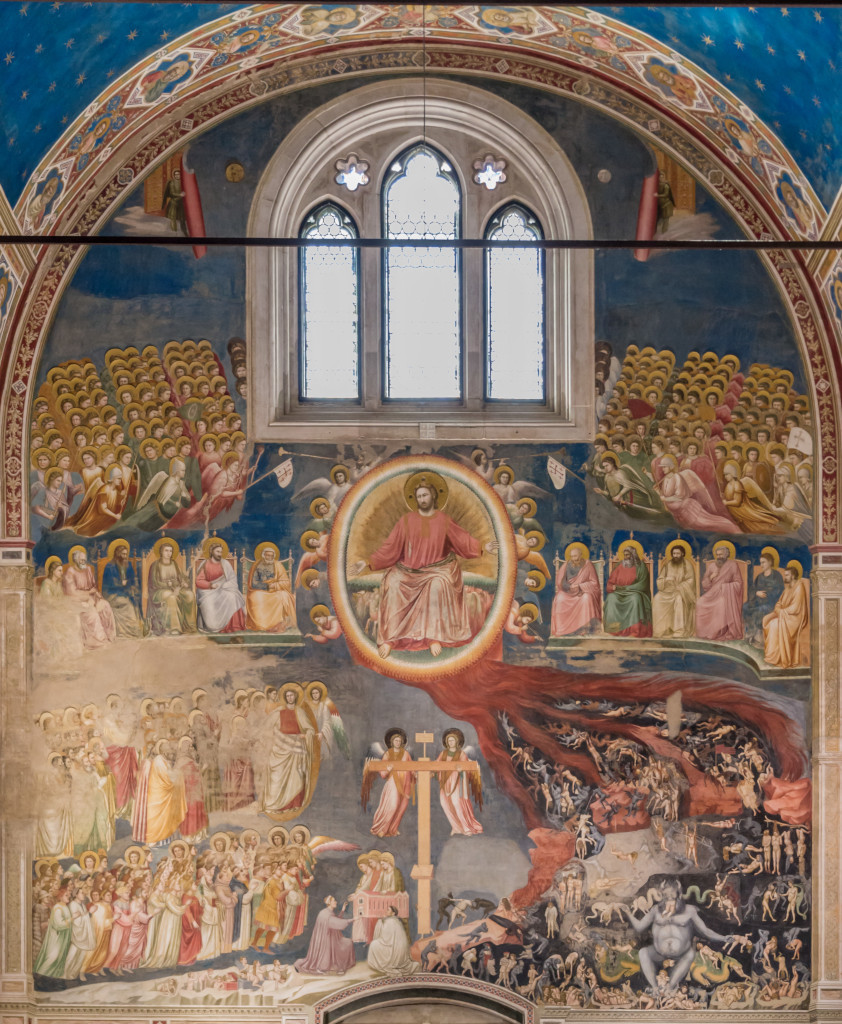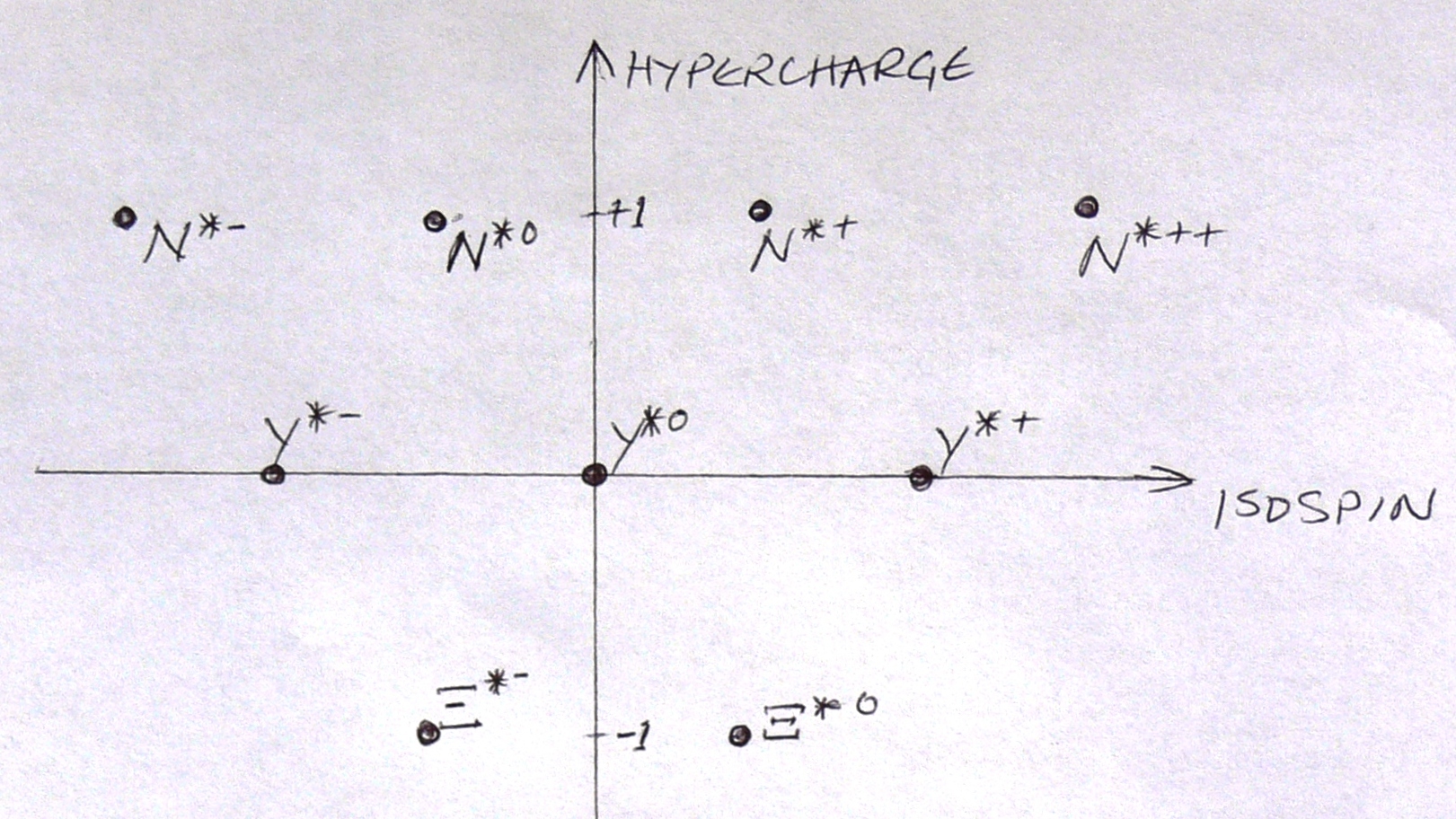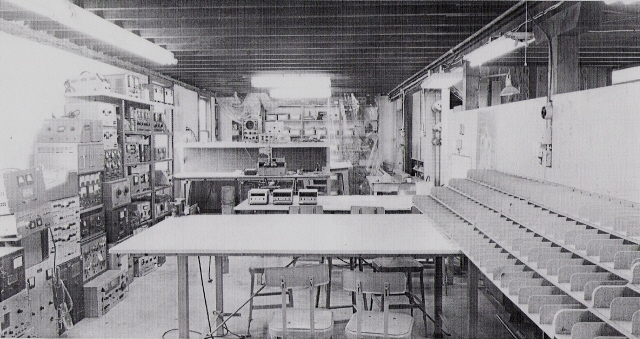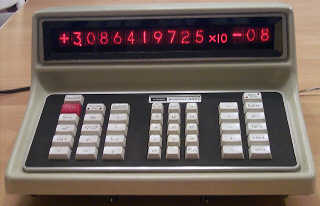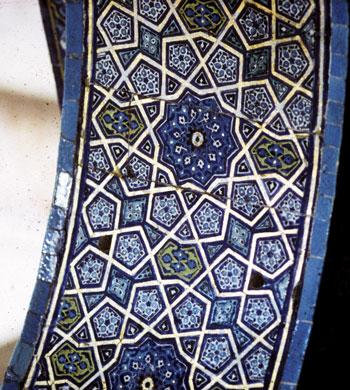Art can have several uses, but all of these uses are secondary, the primary purpose of the artistic gift is to build up the Kingdom of God.
Creativity in Science through Beauty
 Liturgical science?
Here is a Way of Beauty replay of an article first published in April 2010. I included this example as part of my class in architecture and traditional proportion recently, to illustrate the fact that modern science does not invalidate the traditional approach to number, rather it reinforces it......
Liturgical science?
Here is a Way of Beauty replay of an article first published in April 2010. I included this example as part of my class in architecture and traditional proportion recently, to illustrate the fact that modern science does not invalidate the traditional approach to number, rather it reinforces it......
In the Canticle of Daniel, chanted on Lauds Sunday Week 1and all feast days in the Divine Office, all of creation is called to give praise to God. The frosts hail and snow, wind and rain and all the other inanimate aspects of creation listed in this canticle do not give praise to God literally, but through their beauty they direct our praise to God. The cosmos is made for us. Through it, we perceive the Creator. In this sense the whole of Creation is ordered liturgically, in that it directs us to God and we give Him thanks, praise and glory. That thanks and praise of man is expressed most perfectly in the liturgy.
Well it seems that we could modify this canticle in accordance with the discoveries of particle physics, perhaps adding the line: ‘Oh you multiplets of hadronic particles, give praise to the Lord. To Him be highest glory and praise forever.’
In excellent his book, Modern Physics and Ancient Faith, describing the consistency between the Faith and the discoveries of science, Stephen M Barr describes the scientific investigation of a grouping of sub-atomic particles which he refers to as a ‘multiplet’ of ‘hadronic particles’. He describes how when different properties, called ‘flavours’ of ‘SU(3) symmetry’, of nine of these particles were plotted mathematically, then they produced a patterned arrangement that looked like a triangle with the tip missing.
‘Without knowing anything about SU(3) symmetry, one could guess just from the shape of the multiplet diagram that there should be a tenth kind of particle with properties that allow it to be placed down at the bottom to complete the triangle pattern. This is not just a matter of aesthetics, the SU(3) symmetries require it. It can be shown from the SU(3) that the multiplets can only come in certain sizes….On the basis of SU(3) symmetry Murray Gell-Man predicted in 1962 that there must exist a particle with the right properties to fill out this decuplet. Shortly thereafter, the new particle, called the Ωˉ was indeed discovered.’
This result would have been of no surprise to anyone who had undergone an education in beauty based upon the quadrivium, - the ‘four ways’ - the higher part of the education of the seven liberal arts of education in the middle-ages[1]. The shape that Murray Gell-Man’s work completed was the triangular arrangement of 10 points known as the tectractys. As described in my previous articles for the New Liturgical Movement, this is the triangular arrangement of the number 10 in a series of 1:2:3:4. 1, 2, 3 and 4 are the first four numbers that symbolize the creation of the cosmos in three dimensions generated from the unity of God; and notes produced by plucking strings of these relative lengths we can construct the three fundamental harmonies of the musical scale. The importance of this in the Christian tradition is indicated by the fact that Raphael’s School of Athens fresco, which is in the Vatican, portrays Pythagoras the Greek philosopher whose ideas were the basis of these ideas of harmony and order. He is portrayed looking at a chalkboard with a diagram of the tectractys and X, the Latin number 10. (Above it on the chalkboard is the diagram which is a geometric construction of the musical harmonies.
The idea that the tectractys might be governing the arrangements of properties of these sub-atomic particles does not prove that it is a correct theorem (although I do find it intriguing!). Nor, even, is knowledge of the tectractys necessary to see the missing dot in this case. As Barr points out, it is obvious once you look at the incomplete graph. But it is obvious only once one works on the assumption that nature is ordered symmetrically. Once Gellman did this, his intuition gave him the missing point. This intuitive leap is the first step in any creative process. We come up first with an idea of what we think it might be, and then test it with reason.
I do not have a deep knowledge of particle physics, but I doubt that the traditional quadrivium contains the full range of symmetries that one is likely to see and would need to use as a research particle physicist. Nevertheless, I would maintain that the traditional education in the quadrivium would enable the research scientist to be more creative in his work. A traditional education in beauty, which is what this is, trains the mind to work in conformity to the divine order, to which, in turn, the natural order conforms. Such a mind is open to inspiration from the Creator, and is more likely to make the necessary intuitive leap when placed with an array of data. The mind that habitually looks to the divine symmetry is more likely to see the natural symmetry.
Physicist A. Zee put it this: ‘Symmetries have played an increasingly central role in our understanding of the physical world. From rotational symmetry physicists went on to formulate ever more abstruse symmetries…fundamental physicists are sustained by the faith that the ultimate design is suffused with symmetries.Contemporary physics would not have been possible without symmetries to guide us…Learning from Einstein, physicists impose symmetry and see that a unified conception of the physical world may be possible. They hear symmetries whispered in their ears. As physics moves further away from everyday experience and closer to the mind of the Ultimate Designer, our minds are trained away from their familiar moorings…The point to appreciate is that contemporary theories, such as grand unification or superstring, have such rich and intricate mathematical structures that physicists must martial the full force of symmetry to construct them. They cannot be dreamed up out of the blue, nor can they be constructed by laboriously fitting one experimental fact after another. These theories are dictated by Symmetry.’[2]
And what has this to do with the liturgy? I quote from my article on the quadrivium, The Way of Beauty, which appeared on the New Liturgical Movement website in September:
‘The traditional quadrivium is essentially the study of pattern, harmony, symmetry and order in nature and mathematics, viewed as a reflection of the Divine Order. When we perceive something that reflects this order, we call it beautiful. For the Christian this is the source, along with Tradition, that provides the model upon which the rhythms and cycles of the liturgy are based. Christian culture, like classical culture before it, was also patterned after this cosmic order; this order which provides the unifying principle that runs through every traditional discipline. Literature, art, music, architecture, philosophy –all of creation and potentially all human activity- are bound together by this common harmony and receive their fullest meaning in the liturgy…When we apprehend beauty we do so intuitively. So an education that improves our ability to apprehend beauty develops also our intuition. All creativity is at source an intuitive process. This means that professionals in any field including business and science would benefit from an education in beauty because it would develop their creativity. Furthermore, the creativity that an education in beauty stimulates will generate not just more ideas, but better ideas. Better because they are more in harmony with the natural order. The recognition of beauty moves us to love what we see. So such an education would tend to develop also, therefore, our capacity to love and leave us more inclined to the serve God and our fellow man. The end result for the individual who follows this path is joy.’
When the person is habitually ordering his life liturgically, he will tap into this creative force, for he will be inspired by the Creator. Meanwhile all those multiplets of hadronic particles in the cosmos will be giving praise to the Lord.
[1] For more details of the quadrivium read the following articles written by me for the New Liturgical Movement website: Cosmic Liturgy and the Mind of God; On Number; Harmony and Proportion; The Way of Beauty at Thomas More College of Liberal Arts
[2] A Zee: Fearful Symmetry, the Search for Beauty in Modern Physics (New York, Macmillan, 1986) p281. Quoted by Stephen M Barr in A Student Guide to Natural Science (Delaware, ISI Books, 1986) p71.
A Single Mathematical System that Unifies Liturgy and Physics - and Removes Wave Particle Duality
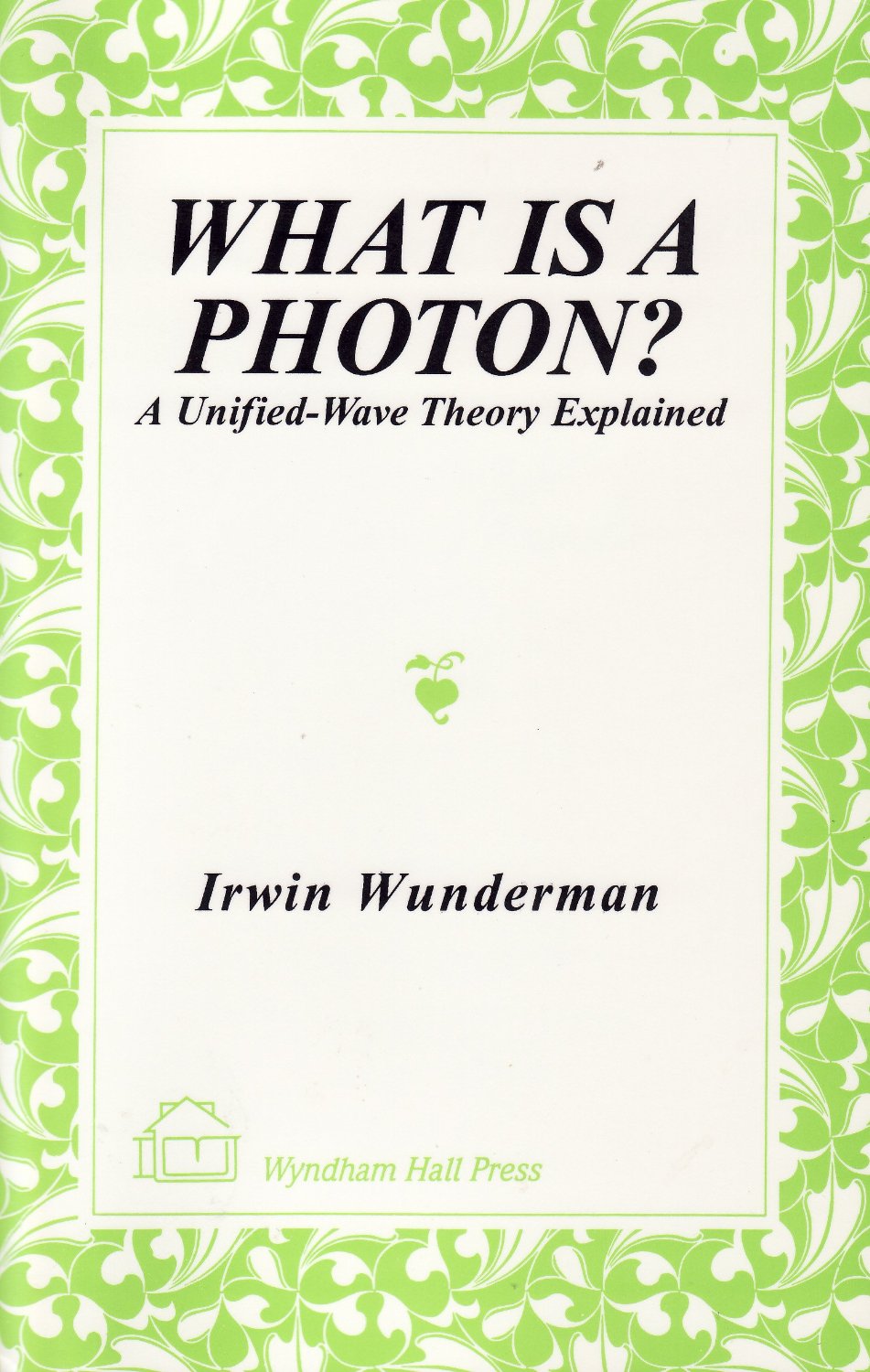 Are there any mathematicians out there who can tell me if this is nonesense? It might turn the whole of science upside down.
I recently did a posting about how the passage through sacred time might be viewed as a helical progression based upon the significance of the numbers 7 and 8 in the liturgy as commented on by St Thomas Aquinas. In the comments at the bottom of the article a regular reader called Alexey suggested that if this is so we can conclude that time exists in three dimensions. Here is his comment: Time then is more than one dimension. Just like, when traveling through space, it is not enough to say “I am at 40 degrees latitude”, — the longitude must be specified as well, so it is not enough to say “40 days passed”, one has to add “it is Thursday".
Are there any mathematicians out there who can tell me if this is nonesense? It might turn the whole of science upside down.
I recently did a posting about how the passage through sacred time might be viewed as a helical progression based upon the significance of the numbers 7 and 8 in the liturgy as commented on by St Thomas Aquinas. In the comments at the bottom of the article a regular reader called Alexey suggested that if this is so we can conclude that time exists in three dimensions. Here is his comment: Time then is more than one dimension. Just like, when traveling through space, it is not enough to say “I am at 40 degrees latitude”, — the longitude must be specified as well, so it is not enough to say “40 days passed”, one has to add “it is Thursday".
What I fascinating idea. I have heard of multi-dimensional space (although really claim to understand the idea), but not three-dimensional time.
This immediately reminded me of someone I met years ago in Mountain View, California called Irwin Wunderman. His son was a friend of mine from my time studying engineering at Michigan Tech. Irwin was a brilliant man (he was in his seventies, I think, when I met him and he has since died). He was a PhD from Stamford, where he told me, his thesis was so advanced that even in awarding it his advisor told him that they weren't sure that they fully understood it. He had invented a pocket calculator in the 1960s in his garage, which had patented and then marketed (you can read about this here). He was also an entertaining character who loved to give tours of his house which had been a speakeasy and bordello in the 1920s and had even been raided by the Untouchables.
 When I met him he had just written a book in which he described a number system he had developed in which he suggested that numbers do not progress linearly (as we normally imagine them) but in fact counting from one to two is a vector operation (even in the absract world of mathematics). In moving from one to two, the vector of the transition is almost linear, but not quite. It moves slight off in two other dimensions as well. This means that the process of counting follows not a linear scale but a helical path.
When I met him he had just written a book in which he described a number system he had developed in which he suggested that numbers do not progress linearly (as we normally imagine them) but in fact counting from one to two is a vector operation (even in the absract world of mathematics). In moving from one to two, the vector of the transition is almost linear, but not quite. It moves slight off in two other dimensions as well. This means that the process of counting follows not a linear scale but a helical path.
At the beginning of the conversation he had immediately launched into a complicated description of how his theories worked. I have a degree in materials science (which is the physics of solids) from Oxford University and a Masters in engineering. I was never a star student, but it does mean I have more than the average grasp of maths and science. Nevertheless, Irwin lost me in about three sentences. I was hopelessly out of my depth. So I stopped him and said: 'Don't tell me how this works. Tell me instead what the important consequences of this are.'
Then he told me that if you used his number system, rather than the conventional one, there were no irrational numbers and you could, for example, calculate precisely the area of a circle without having to use an approximate value for 'pi' (ratio of the length of the circumference of the circle to its diameter). Also, he said, through this he had come up with his own unified wave theory in which there was no wave-particle duality in the behaviour of photons, for example. I thought that this was staggering. If he really had done this then it could turn science upside down. However, Irwin couldn't find anyone to take any notice of him because he was not associated with any university. He was a complete amateur who had developed this at home. It wasn't just this (from what he was saying). It was so complicated that even most university mathematicians wouldn't understand him. Eventually he had managed to find someone to read and understand it who had some authority and his book was published. But even then, its publication passed largely unnoticed. You can find it on Amazon here.
I tried to show his book any scientists I knew, but I couldn't get anyone to take me seriously and as soon as anyone started to push me with further questions I couldn't answer them; and again, because Irwin was an amateur they were inclined not believe that it could possibly be true.
At the time I had not thought about the comparison with the progression of time and the liturgy in a helix, but it is a striking parallel. Perhaps it means that anything that has magnitude (and not just space and time) is three dimensional; because that magnitude is counted by numbers and the number system is three dimensional? Woh, I'm getting out my depth again...I this needs a real mathematician! Perhaps someone who reads this might be motivated to read Irwin's book and see whether there is anything to it. I would love to think there might be. Maybe this is unifying even more than waves and particles? We might have a bridge between the physical and the metaphysical. Readers help please!
Above: Irwin in his Mountain View house; below the garage in which he invented his desk calculator; and his invention as produced.
The Uniqueness of the Planet Earth?
Does the possible discovery of other earthlike planets undermine the premise of the film The Privileged Planet? Some time ago I wrote about a book and film called the Privileged Planet. In it I described how modern astrophysics suggests that so many physical conditions are necessary for life as we know it to flourish, that the chances of it occurring are negligible. Furthermore, these conditions are also those that allow for the universe to be observed. Given that all of these conditions have occurred simultaneously, what can we conclude about this? I suggested, going further than the authors, that this was consistent with the idea a Creator who made both us and universe, and that we were made by him to observe it so as to direct our praise and even order our liturgy. I should make clear that this does not, in my mind constitute a scientific proof for the existence of God, nor does faith in God rest in the validity of these arguments. It is entirely possible that new evidence may force us to sit down again and recalculate the probabilities. This would not undermine my belief in the place of man in the universe because this belief is based in other things first. It is however an interesting, very interesting, piece of circumstantial evidence given that, as I put it 'the mathematics says that the chance of a place existing that can support us is negligible – so low that it is almost certain that there is no other life in the universe at all'...and yet here we are. As such believing Christians can take it or leave it.
You can access the article either by going to the articles page on this site, or through the link above.
When I posted it some readers contacted me to point out that there have been announcements of the discovery of planets that could support intelligent life and that we may not be alone. Does this undermine any of the arguments.? I don't think so because it does not change the statistical argument in any way. The authors of the book upon which the film was based simply presented the statistical arguments for such an event occurring. The chances, while negligible, were not zero. This means that for it to happen once is amazing. For it to happen twice is even more amazing since the chances are even less, but still possible. Furthermore, before we accept that such planets other than our own exist, we should try to find out how certain the information is. If it is merely hypothesis, then it is not yet scientifically proven. It is not unknown for newspaper articles to present unproven scientific hypotheses in tones that portray the information as certain.
As Jay Richards one of the authors put it to me: 'We have discovered many hundreds of extra-solar planets, but none that come anywhere near fulfilling the basic conditions for habitability. Often when an extra-solar planet is discovered though, NASA puts out a press release claiming we've discovered an earthlike planet. The most earthlike planet we know of is...Mars.
'That said, nothing in our argument requires that Earth be unique. Our argument simply entails that however many habitable planets there are, they will be extremely earthlike, and they will be better platforms for scientific discovery than the alternatives.'
What about the idea that it points to the existence of a Creator? This is to my mind not undermined either, but represents even more circumstantial evidence; provided that the probabilitility of such an event has not been challenged.
The fact that there turn out to be more such privileged planets does, one might argue, lessen our privilege in a relative sense (there is another part of the universe that is equally privileged so we are not so privileged relative to the rest of the universe although the reduction is tiny). However, it does not lessen the privilege in an absolute sense (the a priori chances of any one planet in the universe possessing such a privilege, remain unchanged.) To my mind, the material evidence of God's love and generosity would have increased.
What if at some stage we find such a planet and then can get close enough to find life there? This is an interesting point that is purely hypothetical at this stage. It seems to me that any of the following are possible: it might be that we would discover that such life had a common salvation history and an immortal soul like man; or could have an immortal soul but unlike man on earth, never experienced a Fall, so have a distinct salvation history; or could be intelligent but possess no immortal soul and so would be a sort of hyper intelligent monkey. All of these life forms would be privileged too.
Islamic Tile Patterns Point the Way to Modern Nobel Winning Mathematicians and Chemists
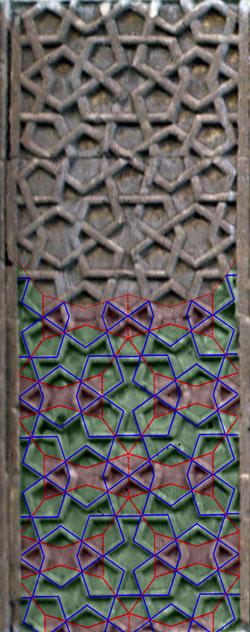 I have written before, here, how the study of sacred geometry and harmony and proportion can point the way to scientists, when describing the discovery of quarks in the early 1960s. Here is another example and the end of the story is this year's Nobel Prize for Chemistry.
Anyone who has studied geometry will know that only threefold and fourfold symettrical patterns are preferred when covering large areas because patterns based on this symmetry will fit together exactly without creating gaps. The Islamic craftsmen of, for example, 13th century Turkey, overcame this difficulty by developing a system of longer range order and using irregular shapes filling the gaps, but creating the sense of a regular order. This way they could create geometric patterns based upon, for example, fivefold symmetry.
I have written before, here, how the study of sacred geometry and harmony and proportion can point the way to scientists, when describing the discovery of quarks in the early 1960s. Here is another example and the end of the story is this year's Nobel Prize for Chemistry.
Anyone who has studied geometry will know that only threefold and fourfold symettrical patterns are preferred when covering large areas because patterns based on this symmetry will fit together exactly without creating gaps. The Islamic craftsmen of, for example, 13th century Turkey, overcame this difficulty by developing a system of longer range order and using irregular shapes filling the gaps, but creating the sense of a regular order. This way they could create geometric patterns based upon, for example, fivefold symmetry.
Move forward to the 1970s and Cambridge mathematician Roger Penfold developed the same idea (independently and unaware of his Islamic predecessors). He called his irregularly shaped insertions 'darts'. About 20 years later the similarity of Penfold's darts to the Islamic tiled patterns was noticed.
These abstract patterns could be extended into three dimensional structures and in the early 1990s microstructure of materials were observed by an Isreali chemist that included, in essence, three-dimensional darts. Here were real materials whose microstructures had been anticipated by the Islamic artists of the 13th century. The discovery of Daniel Schechtman went against the established ideas of what a crystal was his work was not accepted initially. The lab that he was working for asked him to leave. Finally, his work has been recognised now, 20 years later, as ground breaking and he has been awarded the Nobel prize.
The study of traditional proportion and harmony is the study of the natural patterns and rhythms of the cosmos. For the ancients the starting point was those aspects for which there was a consensus of beauty, for example, in enumerating musical harmony. What is so interesting to me is that the patterns seen in a macro scale are observed in atomic and even sub-atomic scale by scientist.
It reinforces the point I made in my first article. That a traditional education in beauty will enhance the creative process. Even in scientific research, ideas are not generated by reason. The process of scientific discovery comes through the observation of nature and then 'seeing' solutions to problems. These solutions just occur as ideas or hunches. The scientist sees the symmetry and order in the situation and can intuit what is missing or what completes the picture, so to speak. Reason is used to test these hypotheses and to confirm or reject them. Of course, this also means that any discipline in which creativity is an asset would benefit from such and education...which is just about every situation in life.
There is another interesting aspect to this tale. It emphasises how the scientist, the mathematician and the artist are all seeking to represent the natural order in different ways, but in their different approaches arriving at the same solution. The scientist is describing mathematically the order that he observes in nature; the mathematician seeks to portray perfect pattern and order in the abstract world of mathematics that conforms to logic and reason; and the geometer seeks to reveal the beauty of the idealised natural order. They are all approaching the same underlying truth and revealing it in different ways.
Praying with the Cosmos – the Ancient Treasury of the Divine Office I
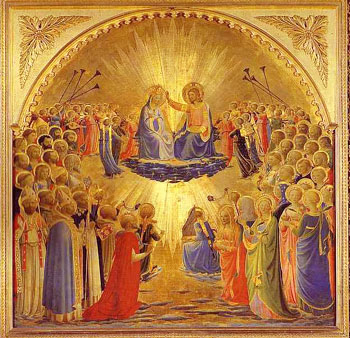 An ancient beautiful prayer that leads us to joy, and opens us up to inspiration and creativity; part 1, part 2 here The Divine Office (also called the Liturgy of the Hours), is one of the four pillars of the spiritual life of the new liturgical movement. This is the first in a regular series that highlight the riches of the the liturgy of the Church and how it is at the root of Western culture.
An ancient beautiful prayer that leads us to joy, and opens us up to inspiration and creativity; part 1, part 2 here The Divine Office (also called the Liturgy of the Hours), is one of the four pillars of the spiritual life of the new liturgical movement. This is the first in a regular series that highlight the riches of the the liturgy of the Church and how it is at the root of Western culture.
'The Mass is a precious jewel and that jewel has its setting, which is the Divine Office. The Divine Office also has its setting, which is the cosmos.' This is how a priest who was visiting Thomas More College of Liberal Arts put it to me recently. In the picture of words he painted for us, the Divine Office mediates between the Mass and cosmos. Through its pattern of prayer, it highlights for us the rhythms and patterns of sacred time, which are reflected also in the cosmos. The cosmos points us not only to the Divine Office, through its order, but also through its beauty draws us in and lifts our souls to God in heaven. God's angels and His saints are praying the heavenly liturgy - this is the activity, so to speak, of the exchange of love with God in perfect and perpetual bliss. And through the Mass the heavenly and the earthly, the divine and the human meet and the otherwise impassable divide is bridged supernaturally. By it, can step supernaturally into the heavenly dimension.
The Divine Office is an often-forgotten ancient form prayer, which has its roots in the pre-Christian worship of the Jews. We can assume that as a devout Jew, Christ will have prayed it, and we know from the Acts of the Apostles that the tradition was continued by His Church. Priests and religious of the Church are obliged to pray it to this day and we would perhaps most commonly associated it with the chanting of monks and nuns. But it is not their preserve. In the past it was a widespread regular practice for most lay people also. The Church of today encourages lay people to pray this too placing it in value above all other prayers and devotions apart from the Mass. I was first encouraged to pray it by my spiritual director, one of the Fathers at the London Oratory, when I was living in England. It has been a life transforming experience for me.
In essence the Divine Office is simple. We say, or ideally sing, the psalms at regular intervals during the day, marking significant times called ‘Hours’. It is part of the Liturgy, the formal and public worship of the Church (like the Mass) and for this reason also known as the Liturgy of the Hours. If you want to pray with the priests of the Church then you can see each Office set out each day at www.universalis.com.
 If we pray in harmony with rhythms and patterns of the cosmos, especially the cycles of the the sun, the moon and the stars, then the whole person, body and soul, is conforming to the order of heaven. The daily repetitions, the weekly, monthly and season cycles of the liturgy allow us to do just that. In his book, the Spirit of the Liturgy, Pope Benedict XVI calls our apprehension of this order, when we see the beauty of Creation a glimpse into 'the mind of the Creator'. This conformity in prayer opens us up so that we are drawing in the breath of the Spirit, so to speak, as God chooses to exhale. It increases our receptivity to inspiration and God’s consoling grace and leads us more deeply into the mystery of the Mass.
If we pray in harmony with rhythms and patterns of the cosmos, especially the cycles of the the sun, the moon and the stars, then the whole person, body and soul, is conforming to the order of heaven. The daily repetitions, the weekly, monthly and season cycles of the liturgy allow us to do just that. In his book, the Spirit of the Liturgy, Pope Benedict XVI calls our apprehension of this order, when we see the beauty of Creation a glimpse into 'the mind of the Creator'. This conformity in prayer opens us up so that we are drawing in the breath of the Spirit, so to speak, as God chooses to exhale. It increases our receptivity to inspiration and God’s consoling grace and leads us more deeply into the mystery of the Mass.
Also, participation in the Liturgy of the Hours is an education in beauty. It impresses upon our souls the order of the cosmos and so enhances our creativity. Whatever your discipline, ideas that are in harmony with the natural order are more likely to occur to you in your daily work. For example, I wrote about how awareness of the symmetry of the natural order has already aided scientific research, in the field of particle physics, in a previous article called Creativity in Science through Beauty.
Those who want to learn about this can approach any priest or religious (ie monk or nun) and ask them what they do. Alternatively, the Way of Beauty summer retreats at Thomas More College of Liberal Arts teach us how to pray the Liturgy of the Hours and how you can realistically incorporated it into a busy working or family life. It also teaches us just how the heavenly order that permeates traditional Western culture and can again in the future. Those who are interested in more information about this should go here.
For a longer essay on this read The Cosmic Liturgy and the Mind of the Creator.
The painting at the top is Fra Angelico and the frescoes below are by Giotto. Note the stars in the sky. This is not just a device by an interior designer to make the space seem bigger by creating the illusion that there is no roof. This is deliberately encouraging in us the sense that the cosmos is praying with us and that the heavens point us to Heaven.
Part II is here.
